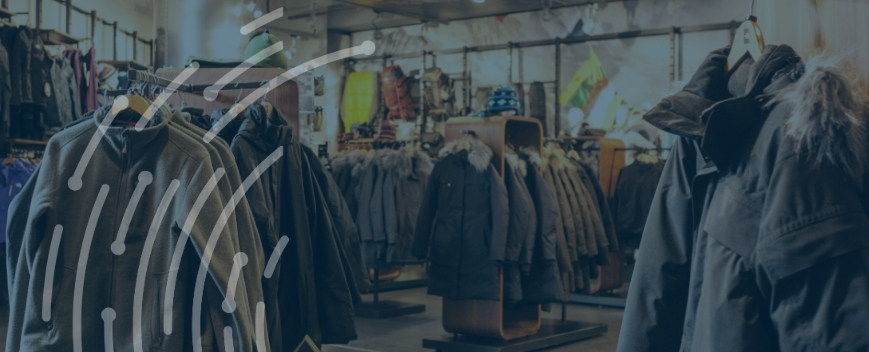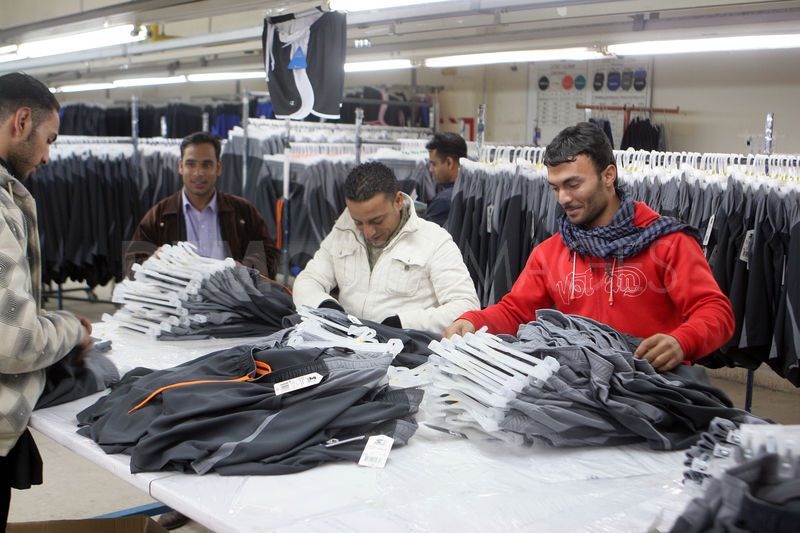Clothing (SIC 14)


Access trade, receivables and supply chain finance
We assist companies to access trade and receivables finance through our relationships with 270+ banks, funds and alternative finance houses.
Get startedContent
Despite being one of the most ancient industry sectors, getting finance for clothing, textiles and garments has traditionally been difficult. Given that retailers purchase materials for clothing which are bespoke (therefore difficult to hold security over), often fragile, and of varying types (different sizes and shapes), financing has often been difficult.
Garments and clothing finance
What’s more, with the added seasonality of the clothing business (your garment sales might peak during the summer or winter seasons), maintaining a healthy cash flow is crucial for the business.
Have you got a fashion startup? Read our guide and top tips for starting a fashion business.
Top Tips for getting finance for garments
1. Know your supplier
It’s so important to know who you are buying off, no matter what country or jurisdiction you are purchasing from. Getting credit checks or references from credit agencies can help determine the financial stability of the company, as well as looking at whether they have good (or bad) history/payment debts. This can be invaluable, especially when agreeing payment terms as it helps prevent any unwanted delayed payments (which could mean your employers or sub-contractors get a delayed payment too).
2. Negotiate better terms
It’s in the interest of the supplier or manufacturer of garments to request payment as soon as possible, or even up front, which often puts a lot of financial strain and risk on to the buyer. Given that your business might take time to refurnish textiles to turn them into clothing brands, and then store / sell on to end customers and await payment before making profit, work capital can be put under pressure quite quickly if your business does not plan effectively.
Open accounts and trust are often seen as a thing of the past now, and it might take a while before a manufacturer of garments trusts the customer (unless they are buying in bulk or have an established relationship). Negotiating slightly better terms however can not only save you money, but also reduce the risk (e.g. if I pay you in full only after you have shipped the goods, I have evidence that you’ve produced the goods, and I am certain to receive them in a known time period).
3. Consider external finance
How could finance for clothing work? Often big retailers will require you to import garments, produce an expensive line of clothing, and then supply it to them before they pay your business, which is often on 30-90 days once the invoice has been sent to them. This is a long time, and could cause working capital challenges.
At the same time, the business might have to pause orders from other suppliers until they have received payment, which can be costly in terms of time and opportunity lost.
Trade and stock finance is set out to bridge this gap. Businesses needing to pay for raw materials (up front) can use a Letter of Credit, which is a secure, backed financial instrument from a bank, whereby the bank or financial institution guarantees payment to the end buyer, or the exporter of raw materials upon shipping goods (on certain terms), which is almost a middle man between the two parties.
What’s more, once invoices have been issued, businesses can release money from those invoices using a discounting facility, thereby reducing the time lag between delivering goods and final payment. Many clothing suppliers and producers require some form of trade or asset backed finance to finance the production of their garments.
4. Consider currency risk
In today’s volatile currency era, it’s important to think about the risk the business is willing to take, especially when we operate in a world of changing foreign exchange margins. Given that you might be acquiring goods from different jurisdictions and paying in certain currencies, derisking currency volatility from your balance sheet by looking at FX options, forwards and spot contracts could be worth considering.
Clothing Finance
Types of Clothing we finance
Key clothing items include:
- Materials
- Finished clothing
- Unfinished clothing goods
- Garments
- Dyes
- Equipment and Machinery
VoIP Finance Requirements
- Your business is looking for £50k+ trade finance
- You want to import or export stock and have suppliers/ buyers
- Your business is creditworthy
How the transaction works
When a business wants to trade internationally, the exporter would typically want to be paid up front by the importer. The bank would issue a Letter of Credit, which guarantees this payment to the exporter upon receipt of documentary proof that the goods have been shipped. This is then repaid once the importer has paid for the goods, which could be anything between 30-180 days later.
What is the SIC Code for Clothing Finance?
SIC Code
14
Manufacture of Wearing Apparel
Other SIC Codes that could also be used are:
- 13990 Manufacture of other textiles n.e.c.
- 14110 Manufacture of leather clothes
- 14120 Manufacture of workwear
- 14131 Manufacture of other men’s outerwear
- 14132 Manufacture of other women’s outerwear
- 14141 Manufacture of men’s underwear
- 14142 Manufacture of women’s underwear
- 14190 Manufacture of other wearing apparel and accessories n.e.c.
Case Study

Financing was needed by a medium sized company which imports clothing from Europe. The company sells predominantly in the UK. The biggest difficulty facing the company was access to capital when large orders came in from existing retailers and which widely varied throughout the yearly cycle. By working with trade finance providers it has improved existing relationships and allowed the company to work with more seasonal and varied clients.






















